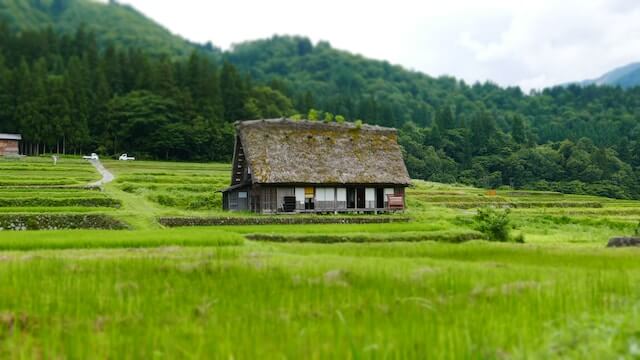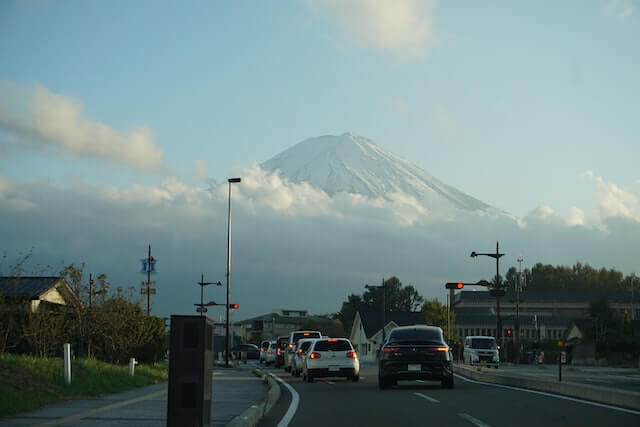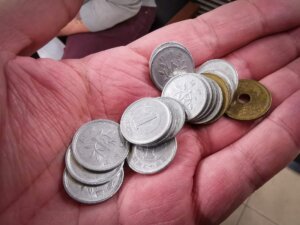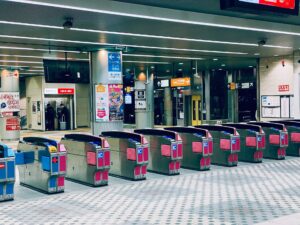When you think of moving to Japan, busy cities with neon signs may come to mind. But behind the flashing lights there’s a gorgeous countryside rich in culture.
If you’re seeking a peaceful life away from the hustle and bustle, those rural areas may be the golden ticket. They may also be a good place to save a buck or two.
The cost of living in rural Japan is less on average than in cities, mainly due to lower rent. It’s also a more affordable setting to purchase real estate and raise a family, making it ideal for those planning long-term. Other factors such as transportation, food, and energy are similar to cities.
In this article, we’ll explore the various costs associated with living in rural Japan and help you determine whether it’s the right choice for you.
Rent in Rural Japan
One of the most significant expenses when living in Japan’s countryside is rent, and prices are generally lower in rural areas than in urban ones.
The average rent for a one-bedroom apartment in rural Japan is around ¥40,000 per month ($300 USD). Compare this to one-bedroom apartments in Tokyo which are ¥71,583 ($540 USD) on average.
There are always trade offs, though, and while rent is cheap in the countryside, it can vary depending on the location, condition, and size of the property.
How Much Does a House Cost in Rural Japan?
If you’re looking to buy a house in rural Japan, the price of land and the buildings themselves are relatively affordable compared to urban areas. However, the process can be difficult and will almost certainly require a real estate agent to help you navigate the system.
If you decide to build a house from the ground-up in the countryside, you’ll likely pay somewhere around ¥40 million ($300,000 USD), but that can change based on house size and location. This includes the rights to the land which can also be highly variable.

Photo by Victor Lu
That price will usually get you a modern home with three bedrooms, a kitchen with a dining room, and a separate living room.
It’s an attractive price, but the real advantage to the countryside of Japan is the Akiya.
Akiya’s: Japan’s Cheap, Vacated Homes
The ‘akiya system’ is one of Japan’s many ways of dealing with the migration of citizens from the rural parts of the country to its cities. Since the children of many elderly homeowners are choosing to live in these urban areas, the old folks have no one to pass the property on to when they leave.
So, they often decide to list the akiya (空き家) for low prices in local databases. On top of that, the government incentivizes the purchase and renovation of these homes to slow the number of people leaving the countryside.
What you end up with is a wide range of houses with a wide range of prices from as low as ¥500,000 ($3,800 USD) to closer to what a new-build would cost. The houses on the lower end are usually not in a great location and they typically also need heavy repairs, but if you find the right Akiya, it can be a steal.
The writer of this article is in the process of an akiya renovation project that will total roughly ¥15 million ($113,000 USD)
Transportation Costs in Rural Japan
Transportation fees can be another significant expense when living in rural Japan, but they’re nowhere near Tokyo’s total cost. Owning a car there means potentially higher insurance rates and paying for a parking spot, something you probably won’t have to do in the countryside.

Photo by ludovico di giorgi
With that said, you can expect to pay roughly ¥25,000 per month to own a car. This includes fees from:
- Bi-yearly inspections (known as 車検 – shaken)
- Insurance
- Taxes
- Gas
The downside of the lower taxes and lack of parking fees is that gasoline tabs for trips to the city become more expensive.
Additionally, public transportation may be limited, almost forcing you to own a car or moped.
Healthcare, Childcare, and Other Costs
Healthcare and childcare costs in Japan are generally affordable compared to other developed countries. And while specialized hospitals and international schools will be in short supply in rural areas, you can always find good public school options.
Here’s how some of those costs break down.

Healthcare Costs
As with anywhere else in Japan, you pay into the national healthcare system at a rate of 9.15% of your monthly salary. Employers generally co-pay along with you.
Actual visits to the hospital are then 70% covered for non-optional treatments and you pay the remaining 30% yourself. This includes dental and prescription medicine.
Childcare Costs
Local municipalities have a strong influence on the cost of childcare in Japan, and in rural areas they normally do their best to make it affordable to incentivize population growth.
Nagi, a city in Okayama prefecture, is a good example of this. Their local government created a wide range of benefits for young children including:
- The Nagi Child Home – a place for parents and young kids to gather
- Free healthcare for children high school-age and younger
- Daycare costs that are half the national standard
- Free school lunches
- Financial assistance programs
Each area is different, but many rural towns are incentivizing higher fertility rates in similar ways.

Other Rural COL Factors
Other costs, such as food, utilities, and internet services, are similar to urban areas. You can expect monthly bills to look something like the following:
- Food – ¥40-60,000 depending on your eating habits (more if you dine out often)
- Utilities – ¥15,000, including gas, electricity, and water
- Phone – ¥2-8,000 depending on data usage
- Internet – ¥5,000 and up based on internet type and speed
The Hidden Cost of Living in Japan’s Countryside
While the cost of living in rural Japan is generally lower than urban areas, there are some hidden costs to keep in mind. For example, the lack of job opportunities in rural areas can make it challenging to find high-salary work.
Additionally, traveling to bigger cities for entertainment or shopping can add up. In some cases, you may be spending ¥3,000 in train tickets for a round trip to the nearest mid-sized city.
Finally, living in low-population areas can take a non-financial toll, especially for foreigners. If you don’t find a role in the local community – whether that be joining a local sports club or finding a circle of friends – loneliness can start to affect your mental health.
However, there are plenty of opportunities if you look for them.

FAQs
Got other questions? Find the answers here.
Is Rural Japan Cheap to Live In?
Living in rural Japan is generally cheaper than urban areas. The average rent is almost half of Tokyo’s, and purchasing a house is also much more affordable. Other factors like transportation and childcare can also be cheaper, and most other living expenses are on par with bigger cities.
Is Rural Japan a Good Place to Live?
Rural Japan is a great place to live for those who love nature and are looking for a cheaper cost of living. However, there are downsides. It can be lonely for foreigners because of the lower population, and nights out to the city can sometimes feel like a hassle.
There are trade-offs to living in any area, so if you want to enjoy the scenic countryside of Japan, it’ll take careful consideration to make sure it’s the right move for you.
What is Considered Rural in Japan?
What’s considered rural in Japan may be surprising to those from lower population density areas like the USA or even Europe. Locals in Japan are likely to say that any town with fewer than 100,000 people is the countryside. These areas are often less than an hour away from major urban centers.
However, keep in mind that even smaller towns usually offer urban amenities and facilities like restaurants, some shopping, and even entertainment like arcades.
Conclusion
Living in rural Japan isn’t for everyone, but it can be a great choice for those wanting more nature than the cities have to offer. And while it’s much cheaper, it’s important to realize that it may also not be the Last Samurai fantasy that some people imagine.
But if you’re open minded and put yourself out there, you can have it all in Japan’s countryside.




